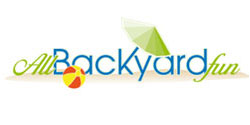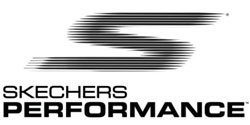Posts tagged Boulder

Apollo Ink
Aug 29th
We visit with Jason and Derrick at Apollo Ink Printing to learn about how they started their growing local print shop in Boulder and what makes them different than some of the larger print shops around town.
See more videos and news on Apollo Ink Here
Fourmile canyon blaze yields new insight into climate change, CU scientists say
Aug 27th
heat-trapping effects of wildfire smoke particles
When the Fourmile Canyon Fire erupted west of Boulder in 2010, smoke from the wildfire poured into parts of the city including a site housing scientists from the University of Colorado Boulder’s Cooperative Institute for Research in Environmental Sciences and the National Oceanic and Atmospheric Administration.
Within 24 hours, a few researchers at the David Skaggs Research Center had opened up a particle sampling port on the roof of the building and started pulling in smoky air for analysis by two custom instruments inside. They became the first scientists to directly measure and quantify some unique heat-trapping effects of wildfire smoke particles.

“For the first time we were able to measure these warming effects minute-by-minute as the fire progressed,” said CIRES scientist Dan Lack, lead author of the study published today in the Proceedings of the National Academy of Sciences.
The researchers also were able to record a phenomenon called the “lensing effect,” in which oils from the fire coat the soot particles and create a lens that focuses more light onto the particles. This can change the “radiative balance” in an area, sometimes leading to greater warming of the air and cooling of the surface.
While scientists had previously predicted such an effect and demonstrated it in laboratory experiments, the Boulder researchers were one of the first to directly measure the effect during an actual wildfire. Lack and his colleagues found that lensing increased the warming effect of soot by 50 to 70 percent.
“When the fire erupted on Labor Day, so many researchers came in to work to turn on instruments and start sampling that we practically had traffic jams on the road into the lab,” Lack said. “I think we all realized that although this was an unfortunate event, it might be the best opportunity to collect some unique data. It turned out to be the best dataset, perfectly suited to the new instrument we had developed.”
The instrument called a spectrophotometer can capture exquisite detail about all particles in the air, including characteristics that might affect the smoke particles’ tendency to absorb sunlight and warm their surroundings. While researchers know that overall, wildfire smoke can cause this lensing effect, the details have been difficult to quantify, in part because of sparse observations of particles from real-world fires.
Once the researchers began studying the data they collected during the fire, it became obvious that the soot from the wildfire was different in several key ways from soot produced by other sources — diesel engines, for example.
“When vegetation burns, it is not as efficient as a diesel engine, and that means some of the burning vegetation ends up as oils,” Lack said. In the smoke plume, the oils coated the soot particles and that microscopic sheen acted like a magnifying glass, focusing more light onto the soot particles and magnifying the warming of the surrounding air.
The researchers also discovered that the oils coating the soot were brown, and that dark coloration allowed further absorption of light, and therefore further warming the atmosphere around the smoke plume.
The additional warming effects mean greater heating of the atmosphere enveloped in dark smoke from a wildfire, and understanding that heating effect is important for understanding climate change, Lack said. The extra heating also can affect cloud formation, air turbulence, winds and even rainfall.
The discovery was made possible by state-of-the-art instruments developed by CIRES, NOAA and other scientists, Lack said. The instruments can capture fine-scale details about particles sent airborne by the fire, including their composition, shape, size, color and ability to absorb and reflect sunlight of various wavelengths.
“With such well-directed measurements, we can look at the warming effects of soot, the magnifying coating and the brown oils and see a much clearer, yet still smoky picture of the effect of forest fires on climate,” Lack said.
Spectators urged to plan ahead for Boulder Stage of the USA Pro Cycling Challenge
Aug 24th
The USA Pro Cycling Challenge comes to Boulder Aug. 25, and will be one of the largest events in city history. More than 100,000 spectators are expected to be in town to cheer on cyclists for Colorado’s biggest bike race.
To help residents and visitors prepare for race day activities and transportation needs, city staff and the Local Organizing Committee (LOC) have developed a Boulder Stage Interactive Map (www.usaproboulder.com/map) featuring periodic road closure times along the race route and public parking locations throughout the city. RTD also will increase bus service to Boulder to provide more transit options for race spectators, and the HOP will provide free service within Boulder on Aug. 25 to make it easier for spectators to get around town to watch the race and celebrate at the race festival on Pearl Street. Service will be doubled for the BV route and on the BOLT to Longmont.

“This will be an extraordinary event for the city, and we’re excited to showcase Boulder to an international audience of cycling fans,” said City Manager Jane Brautigam. “There are going to be several optimum places to watch the race as cyclists come through the city twice, and we want to encourage everyone – residents and visitors – to plan ahead for parking, to take advantage of public transportation, and to use Boulder’s world-class bike paths during the event.”
Some event day tips include:
- Map your route in advance and know when and where roads are closed
- Arrive early and plan to spend the day in Boulder
- Identify your preferred viewing location, and be flexible
- Dress for changing weather
- Bring water and wear comfortable shoes
- Enjoy local businesses and the festival before and during the race
- Bring cash for parking, bike corrals, and the festival – No credit cards will be accepted for parking or bike corrals
- Plan to shop or eat at a local restaurant to avoid traffic delays after the event
Event parking is available throughout the city and can be found on the Boulder Stage Interactive Map (www.usaproboulder.com/map).
Paid on-street parking is available. Paid Event Parking will be available on the University of Colorado at Boulder Campus, city garages and parking lots, and at several local organizations. City parking facilities will charge $30 for event parking during Saturday’s race to help distribute parking throughout the city. The $30 parking fee will be cash only on Aug. 25. Vehicles parked illegally will be towed. Normal parking operations will resume on Sunday, Aug. 26.
Spectators who wish to park and ride bicycles or walk to the downtown events, may park for free at Stazio Field, Flatiron Park North, Pearl East Circle near the Goose Creek path and at GE Analytical Instruments in Gunbarrel. The LOC has arranged for bike corrals at Boulder High School and Casey Middle School. Bikes may be checked in for a $2 donation between 10 a.m. and 7 p.m.
CU-Boulder will have shuttles operating on race day from the CU east campus parking lots and CU main campus parking lots to the intersection of 20thStreet and Pearl Street. Parking at the main campus will be $30; parking at east campus will be $20. The shuttles are included in the parking fees (no bikes allowed on shuttles).
To view the most up-to-date parking and transportation options based on your specific needs, visit the Boulder Stage Interactive Map. The state also is announcing information about road closures throughout the region. Regional information is available at www.cotrip.org.
Please visit RTD’s main website www.rtd-denver.com to see route information for Aug. 25.





















